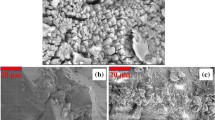Abstract
Polysulfone (PSF) membranes have been widely applied in water and wastewater treatment, food-processing and biomedical fields. In this study, we report the preparation of modified PSF membranes by blending PSF with Cu2O nanowires (NWs) to improve their stability and antifouling activity. Synthesis of novel Cu2O NWs/PSF-blended ultrafiltration membrane was achieved via phase inversion method by dispersing one-dimensional Cu2O nanowires in PSF casting solutions. Various techniques such as XRD, SEM, TEM, and EDS were applied to characterize and investigate the properties of nanowires and membranes. The introduced Cu2O nanowires can firmly be restricted into micropores of PSF membranes, and therefore, they can effectively prevent the serious leaking problem of inorganic substances in separation process. The blended PSF membranes also provided enhanced antimicrobial activity and superior permeation property compared to pure PSF membrane. The overall work can not only provide a new way for preparation of novel blended membranes with multidimensional nanomaterials, but can also be beneficial to solve the annoying problem of biofouling.
Graphical Abstract









Similar content being viewed by others
References
Beer C, Foldbjerg R, Hayashi Y, Sutherland DS, Autrup H (2012) Toxicity of silver nanoparticles-Nanoparticle or silver ion? Toxicol Lett 208:286–292
Cao DW, Wang CY, Zheng FG, Dong W, Fang L, Shen MG (2012) High-efficiency ferroelectric-film solar cells with an n-type Cu2O cathode buffer layer. Nano Lett 12:2803–2809
Deng S, Tjoa V, Fan HM, Tan HR, Sayle DC, Olivo M, Mhaisalkar S, Wei J, Sow CH (2012) Reduced graphene oxide conjugated Cu2O nanowire mesocrystals for high-performance NO2 gas sensor. J Am Chem Soc 134:4905–4917
Eren E, Sarihan A, Eren B, Gumus H, Kocak FO (2015) Preparation, characterization and performance enhancement of polysulfone ultrafiltration membrane using PBI as hydrophilic modifier. J Membr Sci 475:1–8
Hacialioglu S, Meng F, Jin S (2012) Facile and mild solution synthesis of Cu2O nanowires and nanotubes driven by screw dislocations. Chem Commun 48:1174–1176
Hassan IA, Parkin IP, Nair SP, Carmalt CJ (2014) Antimicrobial activity of copper and copper(I) oxide thin films deposited via aerosol-assisted CVD. J Mater Chem B 2:2855–2860
He T, Zhou WY, Bahi A, Yang H, Ko F (2014) High permeability of ultrafiltration membranes based on electrospun PVDF modified by nanosized zeolite blended membrane scaffolds under low pressure. Chem Eng J 252:327–336
Jiang JH, Zhu LP, Zhu LJ, Zhang HT, Zhu BK, Xu YY (2013) Antifouling and antimicrobial polymer membranes based on bioinspired polydopamine and strong hydrogen-bonded poly(N-vinyl pyrrolidone). ACS Appl Mater Interfaces 5:12895–12904
Jones CM, Heok EMV (2010) A review of the antibacterial effects of silver nanomaterials and potential implications for human health and the environment. J Nanopart Res 12:1531–1551
Mansouri J, Harrisson S, Chen V (2010) Strategies for controlling biofouling in membrane filtration systems: challenges and opportunities. J Mater Chem 20:4567–4586
Nady N, Franssen MCR, Zuilhof H, Eldin MSM, Boom R, Schrően K (2011) Modification methods for poly(arylsulfone) membranes: a mini-review focusing on surface modification. Desalination 275:1–9
Pang H, Gao F, Lu QY (2009) Morphology effect on antibacterial activity of cuprous oxide. Chem. Commun 9:1076–1078
Qin L, Pan X, Wang L, Sun X, Zhang GL, Guo XW (2014) Facile preparation of mesoporous TiO2(B) nanowires with well-dispersed Fe2O3 nanoparticles and their photochemical catalytic behavior. Appl Catal B 150–151:544–553
Shen C, Meng Q, Zhang GL (2011) Chemical modification of polysulfone membrane by polyethylene glycol for resisting drug adsorption and self-assembly of hepatocytes. J Membr Sci 369:474–481
Singh AK, Singh P, Mishra S (2012) Anti-biofouling organic-inorganic blended membrane for water treatment. J Mater Chem 22:1834–1844
Song HY, Wang WB, Zhao P, Qi ZT, Zhao SH (2014) Cuprous oxide nanoparticles inhibit angiogenesis via down regulation of VEGFR2 expression. Nanoscale 6:3206–3216
Susanto H, Ulbrichat M (2009) Characteristics, performance and stability of polyethersulfone ultrafiltration membranes prepared by phase separation method using different macromolecular additives. J Membr Sci 327:125–135
Tan YW, Xue XY, Peng Q, Zhao H, Wang TH, Li YD (2007) Controllable fabrication and electrical performance of single crystalline Cu2O nanowires with high aspect ratios. Nano Lett 12:3723–3728
Yang WJ, Shen CC, Ji QL, An HJ, Wang JJ, Liu QD, Zhang ZZ (2009) Food storage material silver nanoparticles interfere with DNA replication fidelity and bind with DNA. Nanotechnology 20:1–7
Yec CC, Zeng HC (2012) Synthetic architecture of multiple core–shell and yolk–shell structures of (Cu2O@)nCu2O (n = 1–4) with centricity and eccentricity. Chem Mater 24:1917–1929
Yin M, Wu CK, Lou YB, Burda C, Koberstein JT, Zhu Y, O’Brien S (2005) Copper oxide nanocrystals. J Am Chem Soc 127:9506–9511
Yu HJ, Cao YM, Kang GD, Liu JH, Li M, Yuan Q (2009) Enhancing antifouling property of polysulfone ultrafiltration membrane by grafting zwitterionic copolymer via UV-initiated polymerization. J Membr Sci 342:6–13
Zhang L, Wang H (2011) Cuprous oxide nanoshells with geometrically tunable optical properties. ACS Nano 4:3257–3267
Zhang YQ, Wang LL, Xu Y (2015) ZrO2 solid superacid porous shell/void/TiO2 core particles (ZVT)/polyvinylidene fluoride (PVDF) composite membranes with anti-fouling performance for sewage treatment. Chem Eng J 260:258–268
Zhao CS, Xue J, Ran F, Sun S (2013) Modification of polyethersulfone membranes—A review of methods. Prog Mater Sci 58:76–150
Zhao YF, Zhu LP, Jiang JH, Yi Z, Zhu BK, Xu YY (2014) Enhancing the antifouling and antimicrobial properties of poly(ether sulfone) membranes by surface quaternization from a reactive poly(ether sulfone) based copolymer additive. Ind Eng Chem Res 53:13952–13962
Acknowledgments
This work was supported by the National Natural Science Foundation of China (No. 21236008 and 21476206), the Taishan Scholarship Blue Industry Program from Shandong Provincial Government (Grant No. 2014008), the Fujian Oceanic Hi-Tech R&D Program (No. 2014-06), and the Zhejiang Provincial Bureau of Science and Technology (Grant No. 2014C33032).
Author information
Authors and Affiliations
Corresponding author
Rights and permissions
About this article
Cite this article
Xu, Z., Ye, S., Fan, Z. et al. Preparation of Cu2O nanowire-blended polysulfone ultrafiltration membrane with improved stability and antimicrobial activity. J Nanopart Res 17, 409 (2015). https://doi.org/10.1007/s11051-015-3215-y
Received:
Accepted:
Published:
DOI: https://doi.org/10.1007/s11051-015-3215-y




